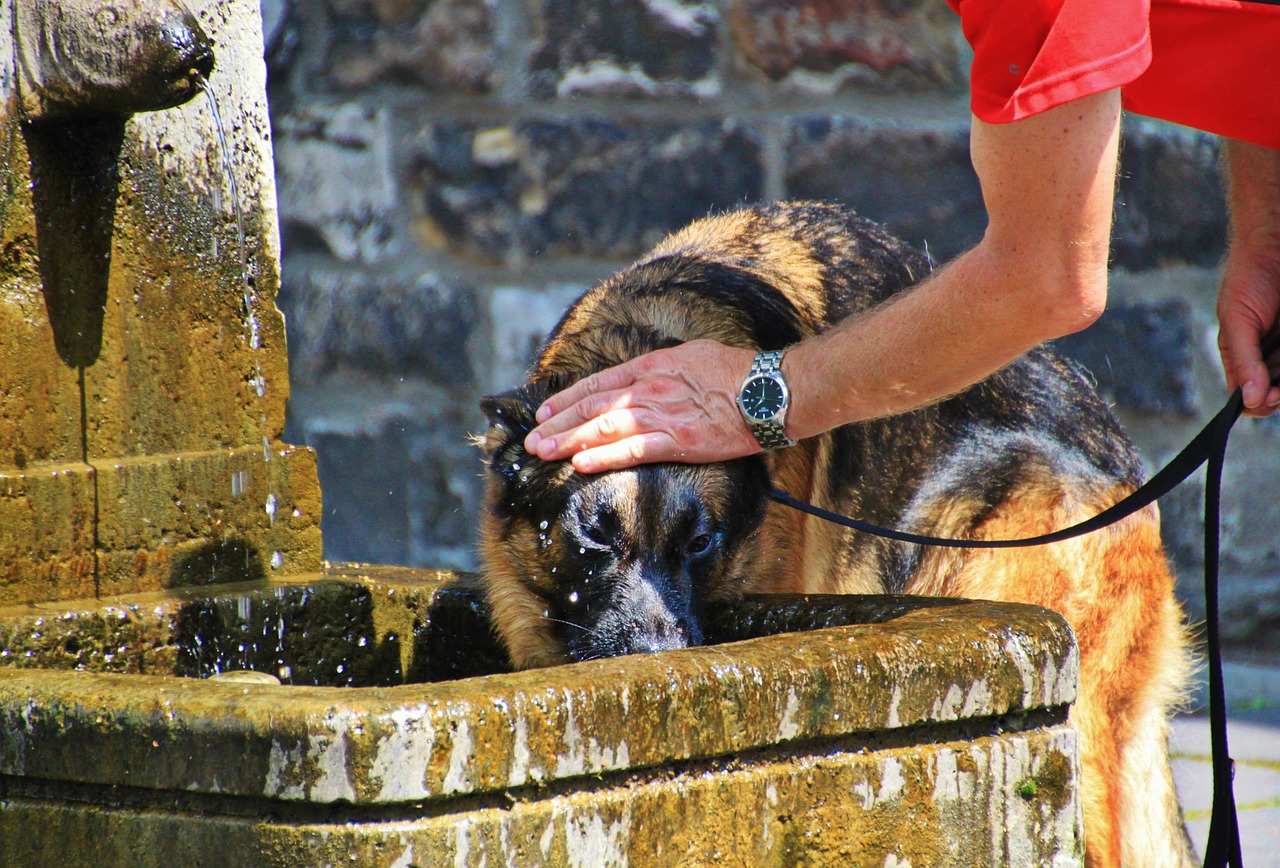
After a cool, wet spring, the first heat of summer is a warm relief. But for dogs and other furry friends, the high temperatures can present a real danger.
The veterinarians at the Ontario Veterinary College at the University of Guelph want pet owners to be aware that even short activities in the sun put pets, especially dogs, at risk of heat-related illness or injury.
The biggest danger lies in being locked in a hot vehicle, which is why pet owners should never leave animals in cars even for a few minutes. But even a short run on a hot day can push pets into the danger zone, said Prof. Shane Bateman, who works in the Department of Clinical Studies and is an emergency and critical care specialist at OVC Health Sciences Centre.
All animals are at risk of heat-related injury from overexertion, but dogs are particularly vulnerable, Bateman added.
“The problem with dogs is that their inherent desire to please their owner can sometimes supersede their own self-preservation.”
Dogs typically love to run and play with their owners and will do so until they exhaust and dehydrate themselves.
Cats are different, said Bateman. They make their own decisions about how much they exert themselves. Cats also have unique vascular adaptations that enable them to tolerate heat because they can shift their blood supply around their bodies.
Dogs can easily develop severe heart-related injury if they can’t rest and get cool. Injury can accelerate quickly in part because the method dogs use to cool themselves – panting – is a form of exertion in itself.
Bateman said that many furred mammals, from dogs to rodents, have no sweat glands and therefore need to pant to get cool.
“When they pant, they are accomplishing two things,” he said. “They are getting in more oxygen and getting rid of waste and they are bringing cooler air into their body.”

Because a dog’s lungs are highly vascularized, by moving air in and out of lungs rapidly, dogs can cool their blood. The problem is that sometimes the air around them is not cool enough and the work of panting further contributes to overheating.
Dogs with short snouts, such as pugs and bulldogs, are at higher risk since they can’t pull air in deeply enough. Large, hairy dogs also overheat quickly.
What is a normal amount of panting and what is a danger sign? Bateman said to watch for how much effort the dog is exerting to get cool.
“At some point, you will notice they are making more noise, they are trying harder to get their breath. They might have an expression of panic or anxiety on their face, with their eyes becoming wider and their pupils dilating.”
They might also start to drool with a long, relaxed tongue, and their gums might be bright red as they try to move blood to the skin surface to cool, he added.
For cats, panting is rare, and it’s more typically a sign of stress, said Bateman. For example, a cat might pant in the car on the way to the vet. Since cats know to rest and seek out cool areas when they are hot, they rarely need to pant. In fact, if you notice your cat panting for more than two or three minutes, it’s a cause for concern, he said.
Any of those are signs to get your pet’s temperature down quickly. Take them out of the heat as soon as possible, and if you can, get them wet and in front of a fan or a place with air conditioning, said Bateman.
If a pet isn’t cooled quickly, the next phase will be heat-related injury, in which the pet will become sleepy or dazed and might start vomiting. That’s when it’s time to get medical help, said Bateman. Place them into an air-conditioned vehicle and get them to an animal hospital where vets can take quick action to stop any organ damage.
If you aren’t sure whether your pet really is in distress and needs to go to hospital, it’s best to get help rather than wait it out, he said.
“If you have tried all the usual steps and you don’t see them getting better, get help. It’s always better to be safe than sorry.”
Contact:
Prof. Shane Bateman
sbateman@uoguelph.ca